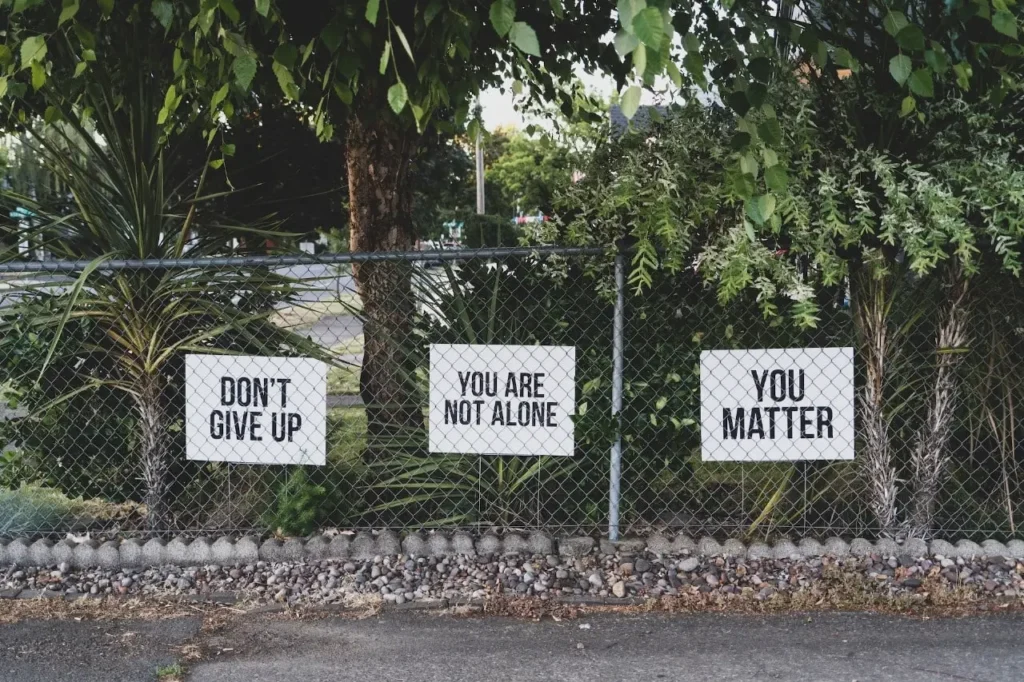In the realm of mental health and public health, few issues are as pressing and delicate as preventing suicide. The statistics are sobering: suicide is a leading cause of death worldwide, and its profound impact extends to countless families, friends, and communities. However, there is hope. With the right knowledge, awareness, and strategies, we can make a difference.
In this blog, we’ll delve deep into preventing suicide, discussing the causes, warning signs, risk factors, and most importantly, the strategies to combat this devastating issue. Join us on this journey to understand, identify, and take action against suicide.
Understanding Suicide: Statistics and Causes
To effectively prevent suicide, it’s essential to comprehend the scope of the problem and the underlying causes. Suicide is a global concern, with approximately 700,000 people taking their own lives each year, according to the World Health Organization (WHO). In many countries, it is the leading cause of death among certain age groups.
Causes of Suicide
1. Mental Health: One of the primary contributors to suicide is mental illness, including depression, anxiety disorders, bipolar disorder, and schizophrenia. These conditions can lead to overwhelming feelings of despair and hopelessness.
2. Substance Abuse: Substance abuse and addiction often coexist with suicidal tendencies. The use of drugs or alcohol can impair judgment and exacerbate emotional distress.
3. Isolation and Loneliness: Feelings of isolation, social disconnection, or loneliness can intensify suicidal thoughts. A lack of supportive relationships can leave individuals feeling trapped.
4. Trauma and Loss: Experiencing traumatic events or profound losses, such as the death of a loved one or a significant life change, can trigger suicidal tendencies.
Identifying Suicide Risk: Warning Signs and Risk Factors
Recognizing the suicidal tendency is crucial for early intervention. Some warning signs and risk factors for suicide to be aware of are as follow:
1. Depression or Extreme Sadness: Persistent sadness, hopelessness, or despair can be a strong indicator.
2. Withdrawal from Social Activities: Individuals at risk may withdraw from social interactions, hobbies, and interests they once enjoyed.
3. Talking About Suicide: Expressing thoughts or intentions related to suicide is a clear warning sign.
4. Giving Away Possessions: People contemplating suicide may give away their belongings or make final arrangements.
5. Sudden Improvement: Sometimes, a sudden improvement in mood or demeanour can indicate that an individual has decided to act on their suicidal thoughts.
6. Previous Suicide Attempts: A history of suicide attempts is a significant risk factor.

Suicide Prevention: Strategies and Programs
Preventing suicide requires a multi-faceted approach, involving individuals, communities, and organizations. Several strategies and programs have been developed to address this critical issue.
1. Mental Health Services: Accessible and affordable mental health services are essential. Therapy for suicide can provide individuals with the tools to cope with their feelings and develop resilience.
2. Education and Awareness: Suicide awareness programs help dispel stigma and educate people about the signs of suicidality. These programs encourage open conversations about mental health.
3. Community Support: Building strong and supportive communities can serve as a protective factor against suicide. Connections with friends, family, and community organizations can offer a lifeline to those in crisis.
4. Hotlines and Crisis Helplines: Suicide prevention hotlines and crisis helplines provide immediate assistance to individuals in distress, offering a listening ear and resources for help.
5. Gatekeeper Training: Gatekeeper training programs equip individuals in various roles, such as teachers, coaches, and first responders, with the skills to identify and assist those at risk.
6. Youth Suicide Prevention: Adolescents and teenagers are particularly vulnerable to suicidal tendencies. Specialized programs and resources are available to address their unique needs.
7. Research and Data Collection: Ongoing research into the causes and trends of suicide helps inform prevention strategies and target high-risk populations.
10 Warning Signs of a Suicidal Person
To help you identify potential signs of a suicidal person, here are ten warning signs:
1. Expressing a Desire to Die: Verbalizing thoughts of wanting to die or not wanting to live is a clear indicator.
2. Withdrawing from Loved Ones: Social isolation and withdrawal from friends and family can be a sign of distress.
3. Drastic Mood Swings: Rapid shifts in mood from extreme sadness to apparent calmness can be concerning.
4. Saying Goodbye: Saying goodbye to loved ones as if it’s a final farewell can be a red flag.
5. Neglecting Personal Care: A sudden decline in personal hygiene and self-care can indicate emotional turmoil.
6. Loss of Interest: Losing interest in previously enjoyed activities or hobbies can be a sign of depression.
7. Reckless Behaviour: Engaging in dangerous or reckless behaviours without regard for personal safety can be a cry for help.
8. Giving Away Belongings: Distributing possessions or belongings without a clear reason can be alarming.
9. Drastic Changes in Sleep or Appetite: Significant changes in sleep patterns or eating habits can be indicative of emotional distress.
10. Talking About Feeling Trapped: Expressing a feeling of being trapped or hopeless about the future is a serious concern.
Supporting Loved Ones After a Suicidal Death
Tragically, not all suicides can be prevented. When faced with the loss of a loved one to suicide, it’s essential to seek support for oneself and others. Grief counselling, support groups, and therapy can be instrumental in coping with the aftermath of a suicidal death.
In conclusion, preventing suicide is a shared responsibility that requires a holistic approach. By raising awareness, recognizing the signs of suicidality, and implementing effective prevention strategies, we can save lives and create a more compassionate and supportive society. Remember, there is hope, and help is available. Let’s work together to prevent suicide and offer hope to those who need it most.
Must Read: Coping with stress: Tips to managing stress at work{Best of 10}
FAQ
Que 1: How to stop suicidal thoughts?
Seek immediate help from a mental health professional, a crisis hotline, or a trusted friend or family member. Don’t keep it to yourself—talk about your feelings. Remove any potential means of self-harm from your surroundings. You’re not alone, and there’s support available to help you through this.
Que 2: How to help someone who is suicidal?
1. Listen empathetically.
2. Stay with them.
3. Encourage professional help.
4. Remove access to means.
5. Stay connected and follow up.
6. Don’t keep it a secret. Prioritize their safety.
Que 3: What causes suicidal depression?
Suicidal depression results from a complex interplay of genetic, environmental, and psychological factors. These may include trauma, genetics, chemical imbalances, loss, isolation, and untreated mental illness.
Que 4: Is there any suicide prevention helpline/hotline in India or Internationally?
Yes, there are suicide prevention helplines and hotlines both in India and internationally. Here are a few examples:
In India:
1. Vandrevala Foundation – 24/7 helpline: +91-18602662345
2. Roshni – Helpline: +91-914066202000
3. Snehi – Helpline: +91-22-2772 6770 / 79
Internationally:
1. National Suicide Prevention Lifeline (USA): 1-800-273-8255
2. Samaritans (UK): 116 123
3. Lifeline (Australia): 13 11 14
4. Befrienders Worldwide: A global network of helplines in different countries.
These helplines provide confidential support and guidance for individuals experiencing suicidal thoughts or for those who are concerned about someone else’s well-being. It’s essential to reach out if you or someone you know is struggling with suicidal thoughts.









[…] to a state of constant alertness, contributing to heightened stress levels. The boundary between work, personal life, and leisure becomes blurred, leading to burnout and fatigue. The pressure to […]